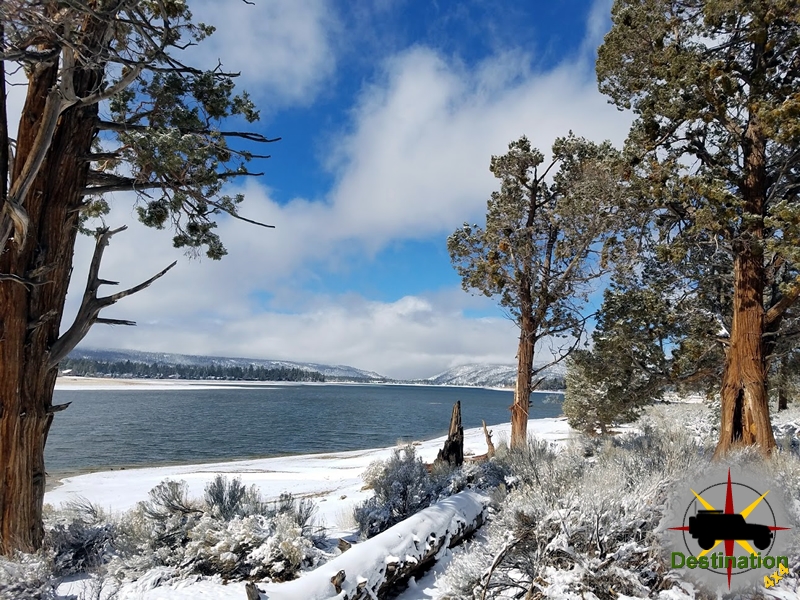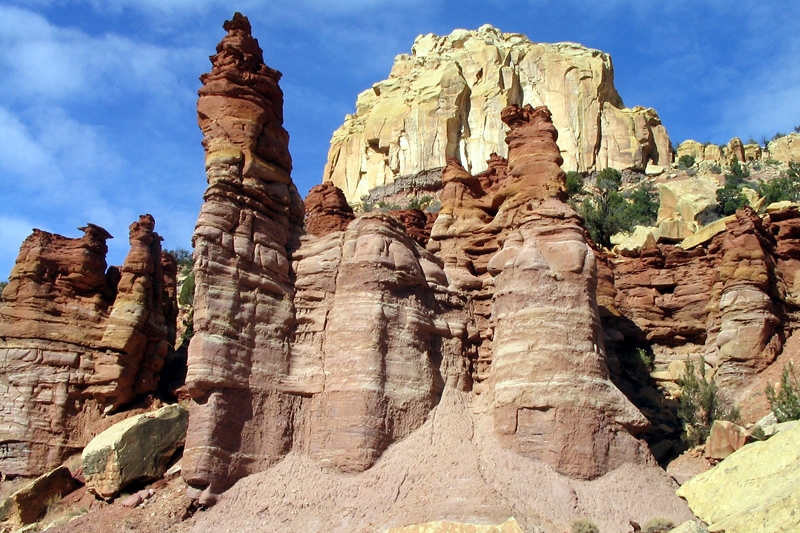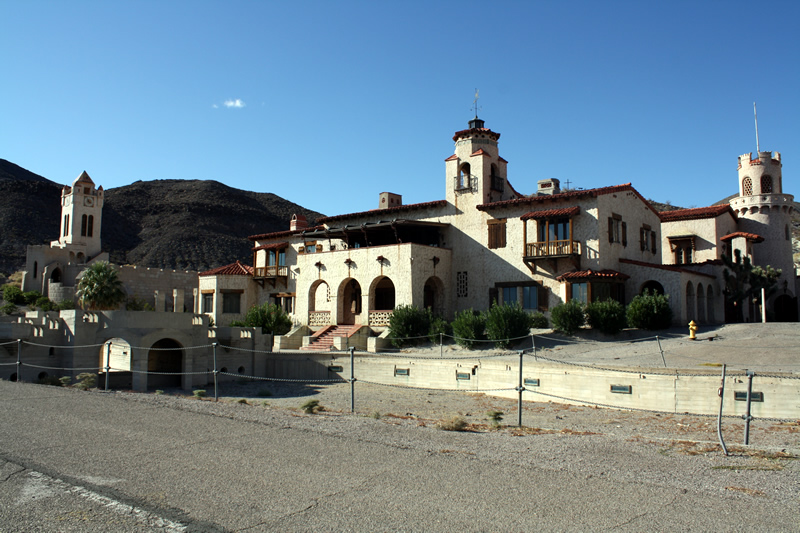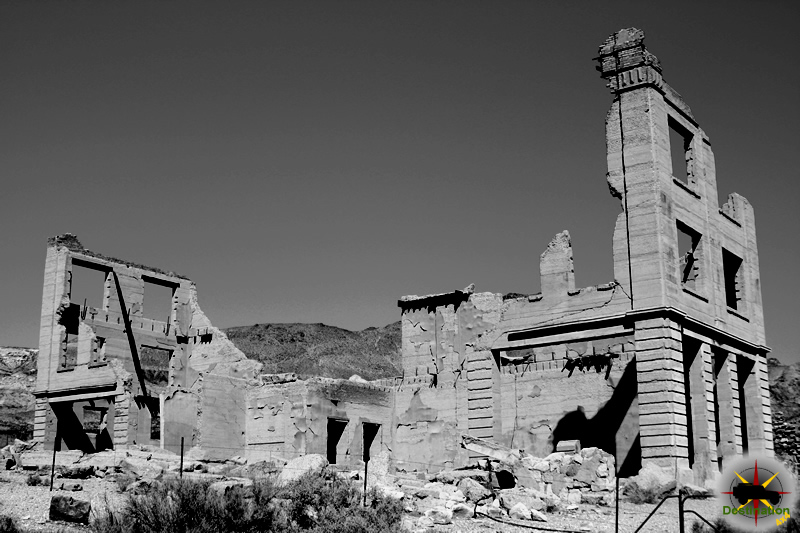
Mineral Park Arizona – Mohave County Ghost Town
Mineral Park is a ghost town located in Mohave County Arizona founded in 1870. Once started, operations continued until 1912. The journey was tough just to them to get into the area due to the remove location. Prospectors would travel up the Colorado River by steamship and disembark in Hardyville which is overrun by modern Bullhead City, Arizona. Once offloaded, they would need to find their way north about 40 miles across the hot dry desert.
Today, the town site is now covered by a modern mining operation.
The post office was founded on December 31, 1872 and shortly after its formation the town was the county seat for Mohave County. Once mining operations came online, the little town supported a variety of businesses to service operations and the needs of its citizens including lawyers, doctors, blacksmiths, carpenters, hotels, assay offices, smelters saloons and dining halls.
The railroards helped boost activity for Mineral Park, when in 1883 rails were installed just 20 miles to the south by the “Atlantic and Pacific” Railroad. The new rail line shortened the distance to transport materials and ore to the location and reduced costs.
Operations continued until 1887 when mine production declined. The county seat was moved to nearby Kingman and the town failed completely in 1912.
The cemetery and some buildings are on private property of the modern mines operations and permission should be sought prior to exploration.
Town Summary
| Name | Mineral Park |
| Location | Mohave County, Arizona |
| Latitude, Longitude | 35.3708275, -114.1530103 |
| GNIS | 8104 |
| Elevation | 4,252 Feet |
| Post Office | December 31, 1872 – June 15, 1912 |
| Newspaper | The Mohave County Miner |
Mineral Park Map
Resources
Callville Nevada – Colorado River Steamship Landing
Callville Nevada is a ghost town and Colorado River Steamboat port, which is now submerged below the waters of Lake Mead. Bishop Anson Call founded and established a colony and warehouse on the Colorado River at the direction of the Mormon Leader Brigham Young. The settlement was located about 15 miles up river from the location of the future site of Hoover Damn.

Callville was established on December 2, 1864 when Anson Call arrived on a small bluff over looking the Colorado River in the Arizona Territory. The settlement was located at the conjunction of the later named Callville wash and the Colorado River.
The founding of the settlement was the churches effort to expand trade routes and European immigration into Utah from the south. The small portgage and landing site was one of several along the Colorado including St. Thomas, Saint Joseph, Overton, West Point, Mill Point ( Simonsville ) and Rioville.
During the Civil War, the army of the United States garrisoned at the site, to protect the Colorado River Steamboats and serve as a landing point for army. In December 1865, the outpost had the honor to become the county seat for Pah-Ute County, Arizona Territory. The station was short lived and transferred to St Thomas just two years later.
In 1869, the army garrison was removed. Following the war, Congress redrew some of the state boundaries and the settlement in the Arizona Territory is moved to Nevada. From 1866 to 1878, the landing at Callville was the High Water of Navigation for steamboat traffic on the Colorado River, which is 408 miles from Fort Yuma. The town was abandoned in June 1869 when the Steamships discontinued service to the site.
Today, the town lies in under 400 feet of water. However, the water levels in Lake Mead are at an all time low, and St. Thomas is currently above water.
“Take a suitable company, locate a road to the Colorado, explore the river, find a suitable place for a warehouse, build it, and form a settlement at or near the landing.”
Brigham Young instructing Anson Call, 1864
Town Summary
| Location | Callville |
| Location | Lake Mead, Clark County, Nevada |
| Latitude, Longitude | 36.1133128, -114.6888720 |
| GNIS | 863773 |
| Other Common Names | Call’s Fort, Old Callville |
Callville Map
Resources
Rioville Nevada – Colorado Steamship Landing
Founded in 1865, Rioville, Nevada was founded by Daniel Bonelli at the confluence of the Virgin River and the Colorado River. Bonelli was a Mormon settler who was sent to the area by Brigham Young. The town is long since drowned in the rising waters of Lake Mead.

Originally known as Junction City, the small crossing of Stone’s ferry was purchase by Bonelli in 1870. Stone’s ferry was renamed Bonelli’s Ferry for its new owner, and the ferry crossing was moved to Junction City which was about two miles down river. In 1871, the site was abandoned by its settlers.
In 1880, a second wave of settlers arrived and the town was renamed to Rioville. The ferry was pulled over the river by a man with a rope line. It cost $10.00 to cross, which included a wagon and 2 persons with an additional charge $0.50 for each additional person. A post office was founded in 1881 and operated until 1906
On July 8, 1879, the steamboat Gila, piloted by Captain Jack Mellon, made Rioville the uppermost landing for steamboats of the Colorado River. The arrival made the town high water head of navigation on the Colorado River and Captain Mellon finally proved that it was indeed the head of steam navigation on the Colorado River. The
Mormon population in town were “wonder-struck” to see a steamboat; one proclaimed it the “biggest thing he ever saw in water.”
Steamboats continued to traffic high up the Colorado River until 1887 when silver mining activity declined during high water months. The town was service from 1879 to 1882 the the sloop Sou’Wester during low water, carried locally mined salt to process silver ore in El Dorado Canyon. From 1869 to 1887, the landing at Rioville was the High Water of Navigation for steamboat traffic on the Colorado River, which was 440 miles from Fort Yuma.
The town was abandoned in the 1890s but the post office lingered to 1906 and the ferry until 1934. The rising waters of Lake Mead, caused by the construction of Hoover Damn drowned the location in water.
Town Summary
| Name | Rioville, Nevada |
| Location | Underwater Lake Mead, Clark County, Nevada |
| Latitude, Longitude | 36.1502603, -114.3994176 |
| GNIS | 849516 |
| Post Office | 1881-1906 |
| Status | Very Wet |
| Also known as | Junction City, Junctionville |
Town Map
Resources
Western Wallflower (Erysimum capitatium)
A member of the mustard family, the Western Wallflower ( Erysimum capitatium ) is a brightly colored yellow flower which is quite common across the western United States, including Arizona, Utah and Nevada.. In European countries, the wallflower earned its name from a habit of growing on… you guess it, walls. More specifically stone, masonry or wooden fences. The name was transposed to the American species despite the fact the plants have no preference for walls.

Common Fiddleneck ( Amsinckia intermedia )
The Common Fiddleneck ( Amsinckia intermedia ) is a wildflower common across the United States and a member of the forget-me-not-family. Also known as the Intermediate Fiddleneck, the name is derived from the flower stems which are formed in the appearance of a violin or fiddle.
Continue Reading →







